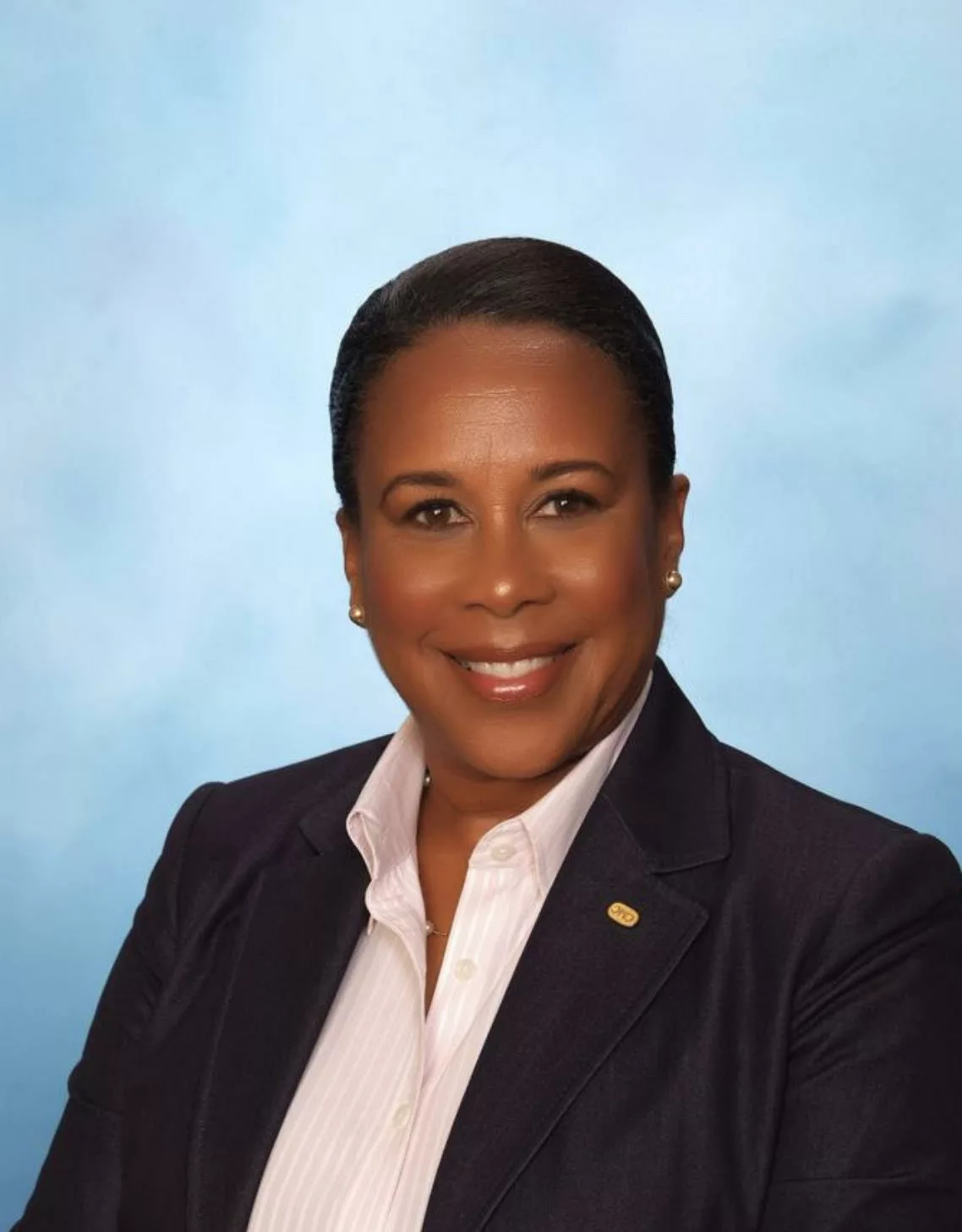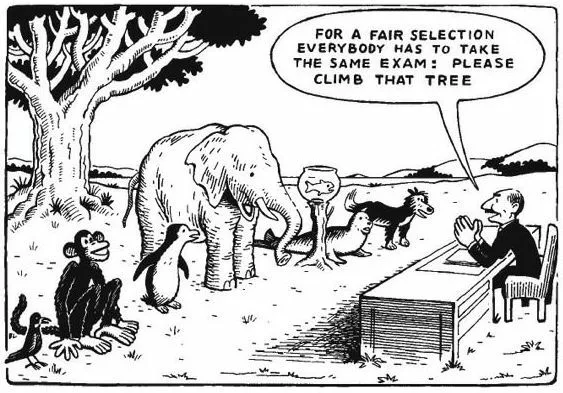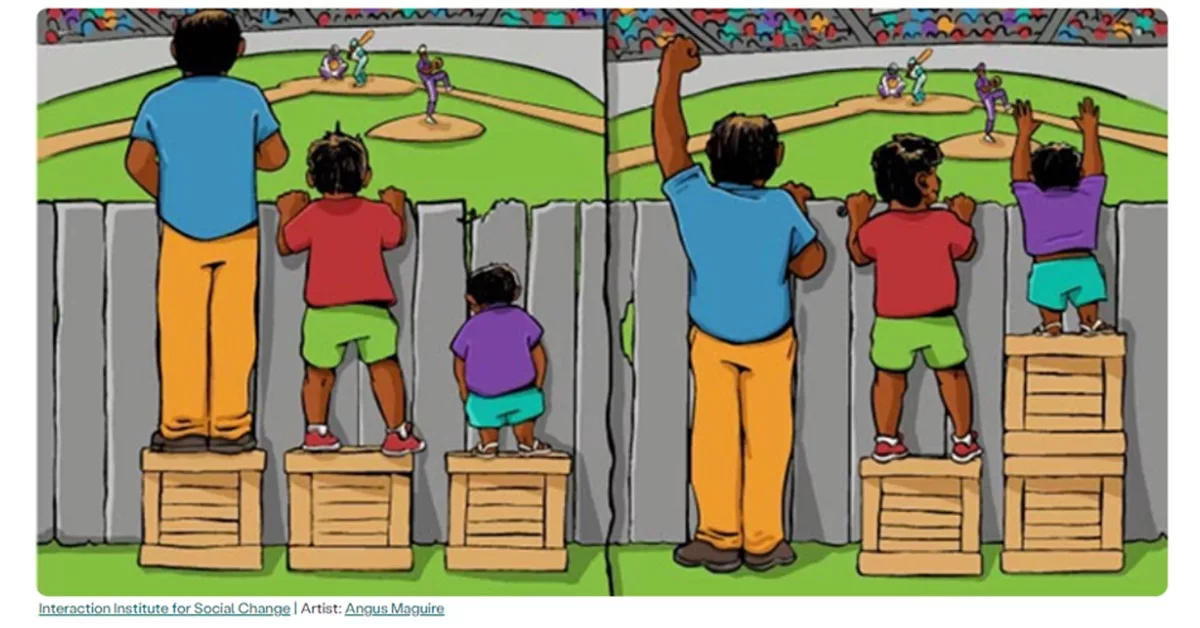THE RENAISSANCE OF SMALL SCHOOLS:
Revalidation is Justification
by Angela L Fubler, BA, BCS, M.Ed.
Consultant, Eaglemann Learning & Innovation Group
Founder, Owner – Chatmore British International School, Bermuda
Welcome Back!
This week we will discuss the Revalidation of Small Schools. Persistent contemplation on the value of small schools within the larger education landscape sparked a connection between small school significance and the thought that “equality is not equity”. In this context, it may be helpful to understand that this thought ignited the inception of this series.
Before we proceed, it is essential to clarify that our exploration of Small Schools is not intended to diminish the importance of Diversity, Equity, Inclusion and Justice (DEIJ) principles in human interactions. Instead, my use of DEIJ principles here aims to illustrate how they are relevant within the context of small schools. My thought is that by understanding how DEIJ principles manifest in the daily experiences of small schools among the larger educational landscape, it might inform discussions on the revalidation of small schools and highlight the seriousness with which these conversations need to be approached. Let’s see if I can bring clarity to this concept I have introduced.
Introduction
The question “Can a fish climb a tree?” is often attributed to Albert Einstein, who used it as a metaphorical way of illustrating the limitations of evaluating individuals based on a uniform standard. I will suggest here that its connection to the premise of diversity can be applied to the revalidation of small schools. Small schools, like unique species in diverse ecosystems, possess distinctive strengths and attributes that set them apart from larger educational institutions.
When we acknowledge the diverse landscape of education, it becomes evident that not every learning environment is suited to the same standards and criteria. Much like a fish excels in its natural aquatic habitat, small schools thrive in their intimate, community-centric settings. They may not conform to the conventional measures used to assess larger institutions, just as a fish cannot be evaluated on its tree-climbing abilities.
Cartoon by Hans Traxler, 1976 / Image Source
In the realm of education, the metaphor challenges us to appreciate the unique strengths of small schools – their personalized learning approaches, the relationships students form with teachers both in and out of class, the more inclusive kinds of groups that form, strong community connections, and holistic development focus. It calls for a departure from a one-size-fits-all model of assessing educational success. The validation of small schools rests on recognizing and celebrating the distinctive qualities they bring to the educational ecosystem.
Just as the metaphor urges an inclusive approach to human potential, it encourages an appreciation for the diverse impact and value that small schools provide. By nurturing and validating the unique strengths of small schools, we create an educational environment where every institution could shine in its own way, contributing to a richer, more diverse educational landscape.
In the context of small schools, using another perhaps more popular image of three children peering over a wall with varying block sizes speaks volumes about the equity challenges small schools often face, especially when competing for resources with larger schools.
Small schools, like the shorter children, may find themselves at a disadvantage in terms of access to funding, facilities, and educational opportunities. In the initial scenario, where all three children are given the same size block, there’s a parallel to the notion of equality in education. However, as illustrated in the image, this approach may not ensure fairness. Larger schools, akin to the taller child with inherent advantages, might easily secure resources, leaving smaller schools struggling to meet their students’ needs.
The second image, with the taller child now having feet on the ground and the shortest child standing on two blocks, aligns with the concept of equity. For small schools, achieving equity means recognizing and addressing their unique circumstances. It involves providing additional support, resources, and opportunities to level the playing field, acknowledging that a one-size-fits-all allocation might not lead to equal outcomes.
In the realm of small schools, achieving equity requires a tailored approach that considers our specific challenges. It might involve advocating for fair distribution of resources, creating policies that acknowledge the diverse needs of small schools, and fostering a supportive environment that allows us to thrive despite potential resource constraints.
The images serve as a poignant reminder that achieving diversity, inclusion and equity in education necessitates acknowledging and rectifying the disparities in resources and opportunities that small schools often contend with.
How Revalidation Might Work
By actively involving small schools in decision-making processes, promoting collaboration, providing targeted support, advocating for recognition, and elevating small school voices, the process of considering small schools within the broader education landscape can perhaps become more mutual and inclusive. This concerted effort towards inclusive consideration signifies a crucial step in the process of revalidating small schools within the educational ecosystem, ensuring Small School leaders and stakeholder voices are heard and their contributions are recognized.
To make this process more inclusive, where small schools are actively considered within the broader education landscape, several steps can be considered. The following are just a few of my own thoughts:
1. Engage Small School Stakeholders: Ensure that stakeholders from small schools are actively involved in decision-making processes at local, regional, and international levels. This involvement could include representation in education boards, policy-making committees, and professional organizations to ensure that the unique needs and perspectives of small schools are considered.
2. Promote Collaboration: Foster collaboration between small schools and larger educational institutions, such as universities, research centers, and educational associations. Encourage partnerships that allow for knowledge sharing, resource allocation, and mutual support to address common challenges and promote best practices.
3. Provide Resources and Support: Allocate resources and provide targeted support to small schools to help them address specific needs and challenges. This could include financial assistance, professional development opportunities, access to technology, and networking opportunities to facilitate collaboration and innovation.
4. Advocate for Recognition: Advocate for the recognition of small schools within education policy frameworks, accreditation processes, and funding mechanisms. Highlight the unique contributions of small schools to educational diversity, equity, and innovation and advocate for policies that support their continued viability and success.
5. Elevate Small School Voices: Create platforms and opportunities for small school leaders, owners, educators, students, and parents to share their experiences, insights, and best practices with the broader education community. This could involve hosting conferences, workshops, webinars, and publishing articles or case studies to amplify small school voices and promote mutual learning and understanding. More on this in our last post.
In the dynamic realm of education, the process of revalidation is both a necessity and a challenge. As we strive to reimagine and revitalize educational systems, small schools emerge as integral components of this transformative journey. However, their role and contributions are often marginalized or sidelined within the broader educational landscape.
To catalyze the revalidation process, it is crucial to foster a more inclusive and collaborative approach that actively considers and values the unique perspectives and experiences of small schools. By engaging stakeholders, promoting collaboration, providing targeted support, advocating for recognition, and amplifying small school voices, we can initiate a powerful process of revalidation that acknowledges the vital role of small schools in shaping the future of education.
Bringing It All Together
As I reflect on the significance of diversity, inclusion, and equity in the context of Small Schools I realize there is so much more to this concept than I expected and though there is not enough space here, I have started to consider the deeper impact and relevance of this concept for us. Also, in this context, the imagery of three children peering over a wall with varying block sizes to watch the same ball game, comes to life much differently for me. I think it brilliantly illustrates the unique equity challenges faced by small schools, emphasizing the paramount importance of embracing diversity and inclusion for our justified existence. Hopefully, I can capture the essence of my reflecting in my concluding thoughts.
Here, I’m reminded of author Jacqueline Woodson’s words, where diversity is about all of us figuring out how to navigate this world together. In our small school community, diversity acknowledges the varied strengths, needs, and learning styles, with a focus on accommodating diverse interests and talents, such as athletics, academics, the arts, small schools create spaces where every student feels valued and included fostering a collaborative, empathetic environment. Within the context of small schools, diversity is not only a matter of course, it is celebrated as an integral part of the school’s identity. I believe in this way; we can find validation in each other.
Reflecting Melody Hobson’s sentiment, “it’s not just about being invited to the party; it’s about being asked to dance, being allowed to dance and being expected to dance”. Applying inclusion as a small school means tailoring our involvement, sharing our personalized experiences, and actively engaging in a holistic process of active participation and engagement.
Equity, pivotal for validation, requires recognition and resolution of our distinct circumstances. Drawing from Pedro Nogueira’s insights on student equity, we illustrate that “at the essence of equity lies the understanding of what defines small schools and how to cater to their requirements. While our outcomes remain constant, the paths to attain them may differ across schools.” Prioritizing equitable resource allocation, establishing policies sensitive to our varied needs, and cultivating a universally supportive atmosphere encompassing all schools are imperative for the prosperity of our small school community.
Conclusion
Here’s to the unexpectedly delightful! So, it feels like the fusion and implementation of diversity, inclusion, and equity could be used to affirm the legitimacy of small schools’ presence. This brief analysis adequately underscores the intrinsic worth of small schools, offering a tailored, community-oriented, and fair educational journey for each student within the broader global education landscape.
Do we think this presents a promising prospect for the revalidation of small schools?
As we journey forward, our focus will shift towards the crucial task of Revitalizing our small school’s community within the broader international educational landscape. In an era marked by numerous small school closures and the pervasive influence of automated technology, our role in shaping the future of education becomes ever more significant. It is imperative that we recognize and uphold the enduring importance of small schools as intimate, community-driven environments where the pursuit of knowledge and self-development reign supreme. Much like Plato’s Academy, which pioneered scholarly inquiry and enlightenment, small schools continue to embody the fundamental principles of education through their commitment to personalized learning, cultivation of strong interpersonal connections, and establishment of a profound sense of belonging. These are the very areas where the global school community is calling for action and innovation, and it is within this context that our small school can truly shine and make a lasting impact.
In the synopsis, I view revalidation like this: Diversity is needed. Equity is required. Inclusion is desired. Is Justice the result?
Contact Angela Fubler

Join the Small Schools Movement!
Would you like your organization or small learning community showcased in our member spotlight? If you are not yet a member of the Small Schools Coalition, we welcome you to become a friend free of charge.
If you are already a member, contact us to discuss how we can give you the complimentary platform to show the entire world what makes your small school special!




Recent Comments